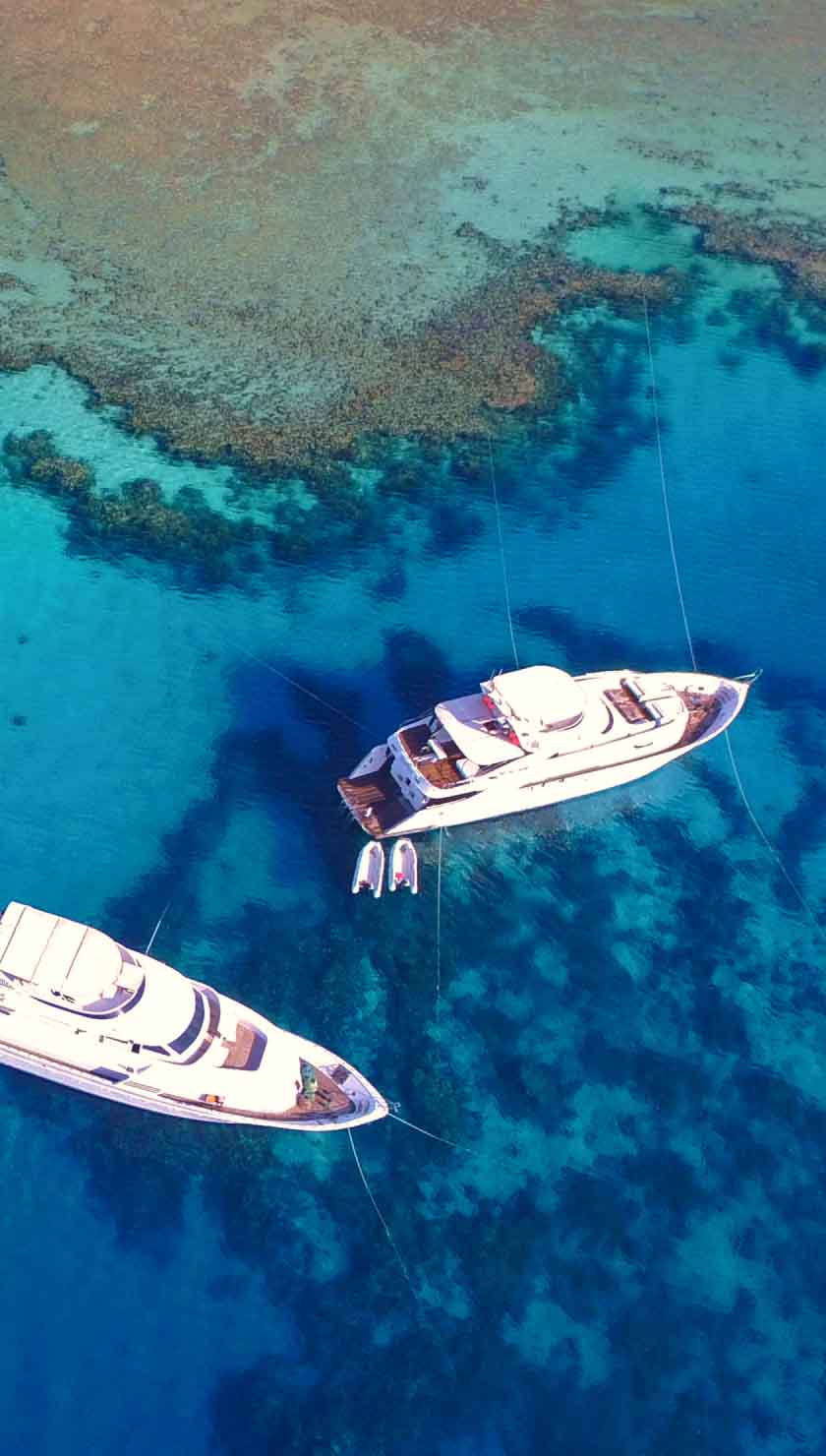Liveaboard Diving in Raja Ampat
What To Expect on a Raja Ampat Liveaboard
Liveaboards in Raja Ampat are the perfect way to explore this amazing dive area. Allowing divers to visit remote and unspoiled areas of Indonesia. Synonymous with stunning islets, crystal clear water and beautiful white sand beaches Raja Ampat is one of Indonesia's most beautiful regions. The archipelago is made up of more than 1,500 islands scattered across a large section of the coral triangle close to New Guinea, perfect for divers to explore by liveaboard. Its fortunate position between the Indian and Pacific oceans means that it is looked upon as one of the richest areas of marine life in the world.
Besides the numerous smaller islets there are four main islands that Raja Ampat liveaboards visit: Salawati, Batanta, Waigeo and Misool. These islands give rise to the name of the archipelago, ‘the Four Kings’. Local legend tells a story of how four kings emerged from eggs that were found by a woman after they hatched they each became a ruler of one of the main islands.
The area was subsequently conquered by the Europeans and was possessed by the Dutch for a time. In modern times the main industry is tourism, the population are Indonesian and most work either in the tourism industry or fishing. The area has recently introduced a marine park fee for liveaboard visitors to help with the efforts to conserve the marine life in Raja Ampat. This fee helps to support patrols and projects to conserve the reefs. Despite the blossoming tourist industry in Raja Ampat, the area manages to retain its untouched feel especially on a liveaboard anchored off mostly uninhabited islands.
Raja Ampat underwater
The biodiversity of Raja Ampat is second to none, scuba diving here is sure to delight all divers. It was declared the most biodiverse place in the world in 2002. The marine park area is home to over a thousand different species of fish and more than five hundred different corals. Much of the diving in Raja Ampat is in reefs amongst the spread of tiny islands, so a dive cruise suits visiting this area perfectly. These reefs are glorious with an array of colours and unique fish of all shapes and sizes. The visibility can be slightly variable but normally around 25-30 meters is the norm.
There are plenty of sharks to be seen in Raja Ampat from white and black tipped reef sharks to whale sharks and even some rarer ones such as wobbegong shark. Wobbegong sharks are fascinating bottom dwelling sharks, flat with a long tail and what looks like a beard on their mouth they really are a photographer’s dream.
Mantas are also frequent visitors to Raja Ampat and they can be seen in sizeable groups passing over the reefs. Turtles can often be seen grazing on the coral reef and in some areas, pods of dolphins can also pop by to delight divers.
There are a wide variety of Raja Amat liveaboards to suit all budgets. From 5 day liveaboard tours to luxury liveaboard vessels offering 2 week dive trips.
Dive sites of Raja Ampat
The dive sites of Raja Ampat can be varied in the fish and critters living on the different reefs but they are almost all spectacular in their own way.
Misool Island, nicknamed ‘the kaleidoscope’, is special because of the riot of colours across the reefs. Macro lovers will be mesmerised with a huge variety of corals full of all kinds of critters and small reef fish. Pygmy seahorses, ghost pipefish and a rainbow of nudibranchs make ideal subjects for macro photographers.
Waigeo is similarly blessed with a rich variety of fish life. Lionfish are hanging around between rocks and you might also catch a glimpse of a juvenile emperor angelfish with its hypnotic colour scheme and clownfish peeking out of an anemone. Fish life is also the main spectacle at Dampier Strait with shoals of trevallies and tuna which can be so huge they affect the visibility in places. The current is particularly hard in this area and it is normally a drift dive. A must-visit during your dive safari.
Mansuar is the place to be for bigger stuff. Here is where the groups of mantas can be seen gracefully swooping past. Turtles are also frequent visitors feeding around the reef along with a host of fish life and beautiful corals.
Cenderawasih Bay, on the other hand, is where you can go to try and find whale sharks. There is a special relationship between these gentle giants and the local fishermen who believe in the luck. They traditionally give fish to the whale shark to bring luck as well which means that there can be several in this area at a time. There isn’t really a season for whale sharks here either so there really is a good chance to dive with them all year round.
Top Tips For divers
- Sea conditions are usually good here but the currents are quite strong so this isn’t really a place for brand new divers.
- There is a one-hundred-dollar marine park fee to be paid upon entering the protected area. This fee pays to continue conservation in the region.
- October to April is the most popular season for diving liveaboards here, although you can dive all year round.
- The water is warm, 26-30 degrees but be mindful of fire urchins when choosing your skin coverage.
Getting to Raja Ampat
Although getting to Raja Ampat is not difficult it does require several flights and boat journeys as there are no direct international flights. You can fly to Sorong from Jakarta and some other larger airports. From here the most popular way to reach the dive sites is by diving on an Indonesian liveaboard. There are a few resorts but the vast majority of diving is from dedicated dive cruises.
There are both motor-boat dive cruises, and the more traditional sailing tours on the grand Indonesian Phinisi sailboats on offer. These beautiful boats offer a peaceful and authentic diving safari experience while you are diving in this isolated and stunning place.











